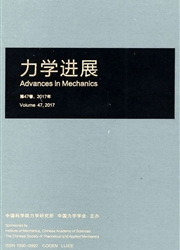

 中文摘要:
中文摘要:
并联机器人的刚度与静力学分析,对于机构力学性能研究具有重要的理论价值和意义.本文围绕杆支撑、绳牵引和钢带传动3种结构形式,详细阐述了国内外并联机构刚度和静力学分析的研究现状.着重从有限元、解析模型和性能分析3方面分析了杆支撑并联机构的刚度研究进展.讨论了有关绳牵引并联机构中绳拉力、动载荷频率、绳牵引预紧力与刚度、静力学之间关系的研究成果.根据钢带并联机器人结构的特殊性,对钢带并联机构的刚度与静力学分析中可能遇到的失稳与振动问题进行了探讨.最后,对并联机器人技术发展情况进行总结与展望,指出随着刚度分析与静力学分析的不断深入,并联机器人的力学理论将会日趋成熟和完善,为并联机器人机构优化设计提供更深入、系统的理论依据.
 英文摘要:
英文摘要:
It is of much significance to analyze the stiffness and statics of parallel robots for the study on their mechanical properties. The development of stiffness and static analysis of parallel robots in domestic and foreign countries were illustrated in detail via three kinds of structures, i.e. rod-support, wire-driven and steel band driven parallel robots. The progress in stiffness analysis of rod-support parallel mechanism was presented in terms of three different methods: finite element, analytical modeling and performance analysis. The results of the relation between wire tension, frequency of dynamic loads, wire pre-tightening force and the stiffness and statics of wire-driven parallel mechanism were discussed. According to the specific structure of steel band driven parallel robots, the problems about instablity and vibration were discussed which may be encountered in analyzing the stiffness and statics of steel band parallel mechanism. Finally, the development of parallel robots was summarized, and the prospect was predicted that the mechanics theory of parallel robots will become increasingly matured and perfect, while the stiffness and statics analysis will witness in-depth development. The mechanics theory will provide systematic theoretical basis for the optimization design of parallel robot mechanism.
 同期刊论文项目
同期刊论文项目
 同项目期刊论文
同项目期刊论文
 期刊信息
期刊信息
